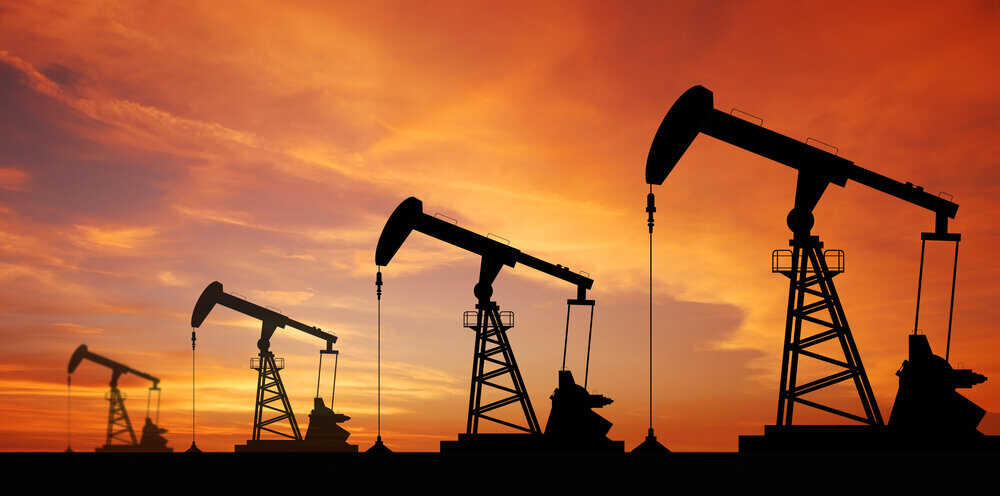Canada is UNINHABITABLE Without Fossil Fuels
By David Yager
If you remained in Alberta during the first major cold snap of the year and are alive to read this article, you owe your continued existence to fossil fuels: coal, oil, and natural gas.
Using Red Deer as an example, from January 12-18, 2024, the average daytime high was -25.9oC, and the nighttime low, -34.7oC. It was a bit warmer in the south and colder in the north, but high/low ranges for the entire province were similar.
Without heat from carbon-based plants and animals—either long dead in the form of coal, oil, or gas, or not-yet fossilized wood or grass—we’d all have frozen to death.
Don’t lose touch with uncensored news! Join our mailing list today.
On January 15, the coldest day of the period, the Alberta Electrical System Operator reported electricity generated in Alberta came 34.2% from toxic coal and 60.2% from that menace-in-the-making, methane or natural gas. Solar was zero and wind 0.002% (fortunately, it was calm, which kept the wind chill down). Hydroelectricity chipped in 2.3%. Biomass, the term for carbon-based fuel escaping fossilization tomorrow through combustion today, contributed the remaining 3.0%. Alberta set an all-time record for electricity consumption during this period.
Back out the 2.3% from hydro and 97.7% of our electricity came from carbon-based sources. Trucks, automobiles, trains, and other heating devices ran on gasoline, diesel fuel, or propane. If the batteries powering Alberta’s few electric vehicles functioned at this temperature, they were also replenished by carbon.
Arctic Temperatures in Western Canada
The cold was not confined to Alberta. Numerous communities in BC set new cold weather records. The Malahat on Vancouver Island and Prince Rupert on the Northern Coast plummeted below the previous lows set in 2007 and 1969 respectively. On January 15, Prince George dropped to -44.2oC. Environment Canada reports the lowest temperature previously recorded was -37.8oC in 1959. Puntzi Mountain, in the west-central interior southwest of Prince George, dipped to -48.8oC. This is a temperature usually associated with Siberia, Canada’s Arctic, Greenland, or Antarctica.
Saskatoon fell to -34.2oC, Regina -36.6oC. It was a bit warmer in Manitoba. Winnipeg, legendary for cold, only declined to a balmy -34.0oC while Brandon reached -34.1oC. Each of these is within a few degrees of the coldest temperatures ever recorded. On the prairies, most record lows were set decades ago. The coldest temperature in Regina dates back to the late 1800s.
The cold snap affected oil prices as bitumen solidified and became increasingly difficult to transport. A Bloomberg report dated January 16 wrote, “Temperatures of -30 degrees Celsius (-22 Fahrenheit) and lower have descended on Alberta and Saskatchewan—cold enough to render the region’s viscous oil rock solid.” We’ve been told for decades that the need to combat global warming required the end of the oil sands, resulting in multiple oil pipeline delays or cancellations. It appears uber-cold weather is equally effective at preventing this deadly hydrocarbon from reaching market.
It is against the reality of what is required to live in this large, cold and dark country for much of the year that we must revisit the ongoing Canadian climate change debate. As the opening line in my book released last year—From Miracle to Menace: Alberta, A Carbon Story—states, “The current debate about climate change and what mankind should do about it has deteriorated to the point of absurdity.”
What is patently absurd in the winter of 2019-2020, is that few, if any, of our elected politicians and thought leaders have the courage to state the obvious: We cannot live in Canada without fossil fuels. Only the most courageous public figures admit that while we can’t exist without hydrocarbons today, one day, we can, and therefore, we must. It is not a matter of if but when.
Do We Live in a Parallel Universe?
In the past twenty years, millions of Canadians have chosen to mentally leave Canada and relocate their minds to a fantasy northern country that can somehow wrestle the global climate change monster to the ground single-handedly. This will be accomplished by a genius combination of virtue signaling, carbon taxes, renewable energy subsidies, expanded government, important conferences, passionate retelling of the enormity of the challenge, and ensuring pension funds, mutual funds, and universities don’t own shares in fossil fuel companies.
In my book, I called it a parallel universe, where the basic laws of mathematics, physics, common sense, reality, and even basic honesty no longer apply.
Completely bonkers.
Canada was settled and populated because it was blessed with limitless supplies of carbon energy to survive the long and cold winter. It started with wood from huge forests. Massive amounts of Western coal ensured the completion of the national railroad, not determined politicians. Hydroelectricity was a nice addition, but it was regional. The first hydroelectric generating station was built in Quebec in 1885. Canada is the third largest hydro generator in the world. Dams, water, and turbines supply 60% of the country’s electricity. Manitoba has great hydro resources from Northern regions, the province’s portion of the Canadian Shield. But where the land is flat, like Alberta and Saskatchewan, hydro only supplies up to 5.5% and 13% respectively.
While the politicians, activists, and the media agonize over the necessity of reducing then eliminating fossil fuel use, there is no evidence that this will happen soon, if ever. The five main forecasters of energy demand and mix for the next 20 years are the International Energy Agency (Paris), Energy Information Administration (Washington DC), ExxonMobil, BP, and Shell. While they vary slightly, all five conclude fossil fuel demand will rise for the next 20 years without a major technological breakthrough in energy sources or feedstock for plastic and petrochemicals that does not yet exist.
Canada’s official global warming concerns (they later renamed it climate change) date back to the UN Rio “Earth Summit” in 1992. However, its first major virtue-signaling policy commitment came in 1997 when Liberal Prime Minister Jean Chretien’s government endorsed the Kyoto Protocol. What was supposed to emerge was a global carbon emissions trading market that would lead to increased efficiency and reduced consumption. It got some traction in the EU countries but has failed in any meaningful way elsewhere.
At the time of the Kyoto Climate Conference almost a quarter-century ago, the world consumed 73 million b/d (barrels per day) of oil. Last year, petroleum demand broke through 100 million b/d for the first time, an increase of 37% since 1997.
Climate change has become an important political issue this century. It affected the outcome of the 2019 federal election. It was 15 years ago when Ontario’s Liberal government committed to lead the charge with an aggressive, multi-year plan to phase out coal for electricity and become a leader in wind and solar power supply and hardware. After electricity prices tripled and the advertised “cleantech” energy jobs never appeared, the whole program was scrapped, and $26 billion of future renewable power purchase commitments was buried in the provincial deficit. The climate-obsessed Ontario Liberal Party was wiped off the political map in the 2018 election. The coal power phase-out was indeed achieved, but at many times the cost projected.
Canada Has Limitless Carbon Energy
Based on rising fossil fuel consumption, Canada’s self-appointed climate leadership role is a failure. According to CAPP (Canadian Association of Petroleum Producers) statistics, when Canada committed to the Kyoto Protocol in 1997, total demand for refined crude oil products of all types was 1.6 million b/d. By 2018, the figure had risen to 1.7 million b/d, a 6.3% increase. Gasoline sales were up 28% to almost 800,000 b/d, and diesel demand had risen by 53% to 560,000 b/d. Natural gas consumption increased from 2.4 bcf/d (billion cubic feet per day) in 1997 to 3.6 bcf/d in 2018, a 50% increase.
There has been some progress in the “higher carbon” fossil fuels. Heavy fuel oil, used for power generation or ships, was down by 45% to 66,000 b/d. Coal consumption declined by 37% in the 20 years from 1997 to 2017, due in large part to Ontario’s phase-out of coal-fired electricity.
According to Statistics Canada, in the past ten years, electricity from wind has increased by ten times, and solar is finally reaching measurable quantities. But the two combined in 2019 were only 4% of total Canadian electricity generation. That’s in the summer. While wind is stable on a seasonable basis when the air is moving, solar drops off sharply when required the most, which is in the winter, an obvious casualty of shorter days at northern latitudes.
What makes the discussion about the future of fossil fuels so shallow is most people have no idea how ubiquitous hydrocarbon byproducts are in everyday life. Morally advanced Quebecers got a crash course last year when CN rail went on strike, reducing that province’s supply of propane delivered by rail tank cars. Despite ample supplies of cheap hydroelectricity, Quebec still consumes about 10% of Canada’s propane for drying crops, construction, industrial operations, and even vehicle fuel.
In terms of gasoline consumption, oil-pipeline-hating Quebecers love to drive. Gasoline consumption continues to rise, as does sales of bigger vehicles, like SUVs. Because they reject the oil sands and pipelines, and even though Montreal refineries receive Alberta crude, they still buy most of their oil from the US and offshore sources. Much is delivered by tanker. There are no publicly confessed regrets about supporting the Liberal West Coast oil tanker ban while accepting tankers in St. Lawrence River, or buying oil from rogue states like Saudi Arabia instead of fellow Canadians.
As the third anniversary of BC’s NDP government approaches in June, Premier John Horgan’s crew wins Canada’s climate hypocrite award. Fulfilling a campaign promise, Horgan went to the Supreme Court to stop the Trans Mountain expansion while simultaneously challenging Alberta’s new law to reduce throughput of the existing pipeline. We don’t want more Alberta oil, but it is illegal to supply less.
BC was quick to ratify the United Nations Declaration on the Rights of Indigenous Peoples (UNDRIP) last year, which demanded more comprehensive First Nations consultation prior to industrial development. Then, Horgan publicly over-ruled the recalcitrant hereditary chiefs blocking the Coastal Gas Link pipeline to Kitimat by championing the “rule of law” after the BC Supreme Court delivered a decision in the pipeline’s favour.
Huge coal exports from BC to Asia are well known but ignored on the West Coast.
In terms of total GHG (greenhouse gas) emissions, little progress is evident. When Chretien signed Kyoto is 1997, total emissions were 687 megatonnes per year. Twenty years later in 2017, that figure was 714 megatonnes, 4% higher. It reached a peak of 744 megatonnes in 2007 and has declined primarily because of the Ontario coal phase-out. Canada’s 2015 Paris commitment was to reduce emissions by 30% below 2005 levels by 2030, a mathematical target of 511 megatonnes and 28% below 2017 levels.
During last fall’s election campaign, Prime Minister Trudeau assured voters Canada was “on track” to meet its Paris commitments in only ten years. Mysteriously, in researching this article, no federal data for 2018 GHG emissions was found on the websites of the usual federal sources. Coincidence, I’m sure. But the data for every year from 1990 to 2017 is easy to find.
As Greta Thunberg and her soulmates remind us regularly, “the science is settled.” The science is that changing the chemical composition of the atmosphere with fossil fuel emissions is making the climate and the weather worse. The science also reports that 68% of GHG emissions come from only ten countries. The top nine, in descending order, are China, US, India, Russia, Japan, Germany, South Korea, Iran, and Saudi Arabia. Canada is tenth at 1.6%. That Canada alone cannot save the planet is rarely mentioned.
The Canadian motto must surely be, “Do as I say, not as I do.” Because for all the speeches, policies, platitudes, promises, taxes, and passionate outpouring of grave concern, there is no evidence that Canada or Canadians have any intention of doing anything other than talking a good climate story if it costs money or votes. Otherwise, carbon taxes would be at $200 a tonne, the number often cited as the level required to materially change consumption behaviour.
Even then, people would still buy fossil fuels to stay alive. Human survival is a powerful instinct. But the economy would be devastated. Statistics show extreme cold kills more people than extreme heat. Blessed with ample and affordable heat, Canada has mostly avoided cold weather deaths. Millions of Canadians apparently want to change that.
We cannot live in Canada without fossil fuels. Repeat. We cannot live in Canada without fossil fuels. Everybody who thinks about it—everyone who understands anything about where things come from or what makes civilization mobile—knows it. Everyone who will still be alive this spring knows this or should know this.
Would people please start saying it out loud—and repeating it regularly—so we can change the channel and have the first intelligent discussion this century about climate change and what to do about it.
David Yager is the author of From Miracle to Menace: Alberta, A Carbon Story (miracletomenace.ca)
Originally published at energynow.ca
Explore More...










